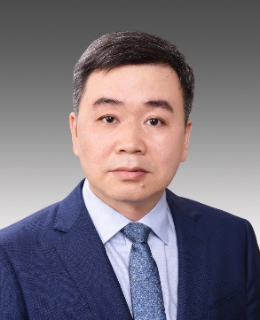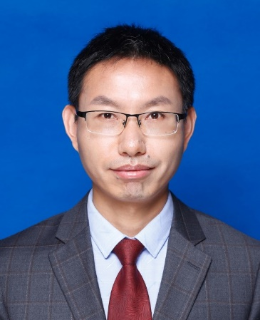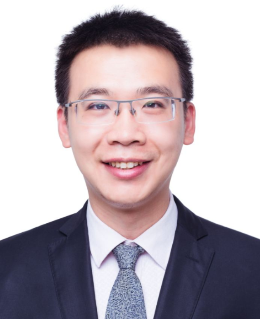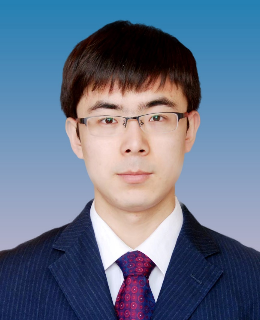|
A.M. Oct 17th
|
|||
|
Session5-3 Engines-0, Room: Meeting Room B 会议室B
|
|||
|
Chair: Shuiting Ding, Civil Aviation University of China
|
|||
|
1
|
8:30-8:45
|
Intelligent Maintenance for Aero-Engines: Embracing Interpretable Artificial Intelligence |
|
| Ruqiang Yan | |||
| Xi’an Jiaotong University | |||
|
2
|
8:45-9:00
|
Research on the Interaction between the Detonation Chamber and Axial Turbine in a Pulse Detonation Turbine Engine |
|
| Zhiwu Wang | |||
| Northwestern Polytechnical University | |||
|
3
|
9:00-9:15
|
Experimental Study on Self-Pulsation Characteristics of Swirl Coaxial Injectors with Different Internal Geometries |
A0437
|
| Hadong Jung | |||
| Chungbuk National University | |||
|
4
|
9:15-9:30
|
Collaborative design of future cross-space and cross-speed domain aviation gas turbine engine |
|
| Tian Qiu | |||
| Beihang University | |||
|
Break 9:30-9:45
|
|||
|
Session5-4 Engines-0, Room: Meeting Room B 会议室B
|
|||
|
Chair: Haiwang Li, Beihang University
|
|||
|
1
|
9:45-10:00
|
Dynamic characteristics analysis and fault diagnosis of complex systems based on nonlinear mode synthesis |
|
| Xingrong Huang | |||
| Beihang University | |||
|
2
|
10:00-10:15
|
Turbofan Engine Fault Detection and Diagnosis Algorithm Based on Experimental Data |
A0687
|
| Chae Yeon Kim | |||
| Inha University | |||
|
3
|
10:15-10:30
|
The design of the welded rotor in the future heavy duty gas turbine based on multiple physical field coupling method |
|
| Bo Hu | |||
| Tsinghua University | |||
|
4
|
10:30-10:45
|
Development of a Micro-Mix H2-O2-H2O Combustion System for Gas Turbine Applications |
|
| Bowen Sa | |||
|
Institute of Engineering Thermophysics, Chinese Academy of Sciences |
|||
Introduction to speakers

YAN Ruqiang
Xi'an Jiaotong University
Professor
Lectrue Title: Intelligent Maintenance for Aero-Engines: Embracing Interpretable Artificial Intelligence.
Lecture Summary/Abstract:
Ensuring intelligent maintenance with high efficiency and accuracy is critical for the safety and reliability of aero-engines. Deep learning-enabled artificial intelligence has made significant progress in fault diagnosis and remaining useful life prediction in this domain. However, the "black box" nature of deep learning models poses challenges in dealing with the complex service environment of aero-engines. To address this issue, this presentation introduces novel insights into intelligent maintenance for aero-engines, focusing on interpretable artificial intelligence within a physics-constrained framework. It provides an overview of artificial intelligence applications in aero-engine maintenance and discusses open challenges in the field. Subsequently, the presentation introduces an interpretable artificial intelligence framework, leveraging physics-informed data science. A case study is presented to demonstrate the application and advantages of interpretable artificial intelligence in aero-engine maintenance.
Biography:
Ruqiang Yan is a Full Professor and Director of International Machinery Center at the School of Mechanical Engineering, Xi’an Jiaotong University, China. He is engaged in research on theoretical methods and engineering applications related to intelligent operation and maintenance of high-end equipment, leading one project of the National Key Research and Development Program of China and one key project of the Natural Science Foundation of China.
Dr. Yan is a Fellow of IEEE (2022) and ASME (2019). He is the recipient of several prestigious awards including the First Prize for Technological Invention in Shaanxi Province in 2020, the First Prize for Natural Science from the Ministry of Education in 2020, the 2019 IEEE Instrumentation and Measurement Society Technical Award, and the 2022 IEEE Instrumentation and Measurement Society Distinguished Service Award. He has led the development of one IEEE standard and has published over one hundred papers in IEEE and ASME journals, and other publications. Currently, he serves as an IEEE Instrumentation and Measurement Society Distinguished Lecturer and is the Editor-in-Chief of the IEEE Transactions on Instrumentation and Measurement.

WANG Zhiwu
Northwestern Polytechnical University
Professor
Lecture Title: Research on the Interaction between the Detonation Chamber and Axial Turbine in a Pulse Detonation Turbine Engine.
Lecture Summary/Abstract:
This lecture will introduce the research progress of the research group on the interaction between the detonation chamber and the axial turbine in a pulse detonation turbine engine. Firstly, a two-dimensional numerical model of a pulse detonation combustor with a GE-E3 two-stage high-pressure turbine was established, and the isentropic efficiency of the turbine driven by pulse detonation was studied in multiple cycles. The research shows that the strong unsteadiness of pulse detonation led to large flow losses in the first stage, but some of flow losses could be recycled by the second stage through the reheating effect. Secondly, the effects of detonation initial conditions on the performance of a PDC-turbine combined system was analyzed. The results indicated that the lean fuel conditions were the ideal equivalence ratio range for combined system operation due to the high thermal efficiency and obvious performance advantage over isobaric combustion. Finally, a three-dimensional numerical model of the GE-E3 two-stage high-pressure turbine was established. The results show that the interaction between the leading shock and the blade caused a significant change in attack angle as well as multiple local adverse pressure gradients, resulting in severe flow separation on the blade surface.
Biography:
Dr. Wang is a professor and Ph.D. supervisor at Northwestern Polytechnical University. His research focuses on "combustion and detonation propulsion". He has published more than 100 papers in top journals such as Applied Thermal and Engineering, Aerospace Science and Technology, International Journal of Hydrogen Energy. He has also been granted 14 patents and has published 1 monograph funded by the National Publishing Funding. In addition, he has won two Second Prize for Progress in Science and Technology, First Prize for Outstanding Contribution to "China Heart in Aviation Power" and other honors and awards.

QIU Tian
Beihang University
Associate Researcher
Leture Title: Collaborative Design of Future Cross-space and Cross-speed Domain Aviation Gas Turbine Engine.
Lecture Summary/Abstract:
Facing the demand for advanced exploration of future "cross space, cross speed" aviation engines, we focus on multi component, multidisciplinary, and multi-dimensional collaborative simulation and design, establish a mapping relationship between multi-disciplinary and system top-level indicators, use top-level indicators to motivate multi-disciplinary exploration of inventory and traction increment, unlock the "overlooking perspective", avoid multi-disciplinary collision obstacles, and trigger "leading innovation" under multi-disciplinary collisions. The collaborative simulation and design platform runs through multiple "advanced exploration" scenarios such as the comparison and selection of the overall concept of the future aeroengine, the "horse race" of component schemes under the traction of the overall goal, and the flexible integration of cross phase component schemes. It leverages the reconstruction of Relations of production with the technological innovation of the collaborative platform, unleashes the leapfrog potential contained in the massive accumulation of multi-disciplinary, and supports the decentralized "unveiling and commanding" mechanism to drive future aviation engines to break through bottlenecks.
Biography:
Qiu Tian, Ph D, associate researcher, deputy director of " Aero-engine System Collaborative Design Center" of Beihang University, engaged in engine Systems science research. The core backbone of the "Advanced Aeroengine Collaborative Innovation Center of the Ministry of Education" and the "Advanced Science Center for Supercycle Aerodynamics and Thermodynamics of the Ministry of Education". The on-site technical leader of the national key model support team and a certain engine joint design team, who has been working on the front line of engine development for a long time, has discovered and solved problems using basic research accumulation. He is the first "flexible intelligence introduction" expert at the Sichuan Gas Turbine Research Institute of AECC and was selected for the "Young Talent Recruitment Project in a certain technology field".

HUANG Xingrong
Beihang Univeristy
Associate Professor
Leture Title: Dynamic Characteristics Analysis and Fault Diagnosis of Complex Systems Based on Nonlinear Mode Synthesis.
Lecture Summary/Abstract:
Nonlinear problem has always been an obstacle in dynamic analysis domain due to its complexity and high computational cost. This work aims to present a simple, accurate and efficient nonlinear modal analysis method which can be applied to some common nonlinear systems, including Duffing system, dry friction, nonlinear material and so on.The kernel technique of this numerical method lies in establishing the variation law of the nonlinear modal parameters in function of modal amplitude:on the one hand, the steady-state problem is simplified into one-dimensional algebraic nonlinear problem, resulting in a significant simplification in numerical computation; on the other hand, the analysis of nonlinear modal parameters in function of modal amplitude provides a modal overview for the comprehension of system’s nonlinear dynamic behavior.Following a description of the theoretical aspects and numerical simulation process of this method, it has been proven to be efficient in analyzing a Duffing system with real nonlinear mode, a dry friction system with complex nonlinear mode and a multi-physics system integrating piezoelectric material.Furthermore, nonlinear mode analysis is employed in the fault diagnosis of part looseness of rotor systems, as well as frequency drift phenomenon and random feature in the narrow frequency band of a high-pressure turbine blade with edge plate damper. A reduction method based on the proposed strategy is then presented, which is simple in mathematical form and efficient in numerical computations for analyzing large complex nonlinear systems. It has significant advantages in computational efficiency when combined with the mode synthesis method to solve the dynamic behavior of large complex nonlinear systems.
Keywords: nonlinear modal analysis; mode synthesis; fault diagnosis; part looseness of rotor system; frequency drift phenomenon of high-pressure turbine blade.
Biography:
She is mainly engaged in research axis of structural vibration and control of aero-engines, robot dynamics and control, tissue engineering and vascular dynamics in biomechanics, and structural dynamics optimization design of complex systems. She has published more than 30 papers as first or corresponding author, including top journals such as JSV, MSSP and so on. She is the chair of one National Natural Science Foundation of China (NSFC) youth fund, one sub-topic of Major Special Projects for Aero Engines and Gas Turbines, and six important industrial projects. She is also the core member of Key Project of National Natural Science Foundation of China and Aero Engine and Gas Turbine Basic Science Centre International Cooperation Project. She has published a textbook on structural mechanics and a monograph on fluid-structure coupling for the 14th Five-Year Plan as chief editor, and a textbook on industrial science and a monograph on engineer education as associate editor.

HU Bo
Tsinghua University
Assistant Researcher
Leture Title: The Design of the Welded Rotor in the Future Heavy Duty Gas Turbine Based on Multiple Physical Field Coupling Method.
Lecture Abstract:
Based on the research results of a significant project, the overall layout scheme for the next-generation heavy-duty gas turbine in China includes welded rotor connections, three-axis distribution, and hot-end output. The main advantage of using welded rotors is their design flexibility, compact structure, and ease of forging. Additionally, they can meet the requirements of large-diameter rotors for low-pressure compressors, low-pressure turbines, and power turbines. However, welded rotors also present challenges in terms of excessive thermal stresses under variable loads, significant transient deformation, and susceptibility to cracking, posing a significant challenge to rotor structural strength design.
The project team, employing a multi-physics coupling approach, studied the flow characteristics inside the rotor cavity and the heat transfer characteristics between the cavity flow and the welded rotor. By predicting the aerodynamic, thermal, and centrifugal loads, the stresses and deformations of the three welded rotor were obtained. Furthermore, structural and geometric synergistic optimization of the welded rotor was carried out. Based on the results of the multi-physics coupling simulation, reductions of not less than 18% (10% being the targeted value) in maximum equivalent stress were obtained, as shown in Fig. 1. As a result, a preliminary conceptual design for the three welded rotors have been developed.
Biography:
Born on May 23rd, 1987, in Lanzhou, Bo Hu began his college life at Tongji University in Sept. 2006, majoring in Mechanical Design, Manufacturing, and Automation. During his undergraduate years, he worked diligently on his studies and earned the prestigious National Graduate Scholarship. He successfully completed his PhD at the University of Duisburg-Essen, funded by the China Scholarship Council, in July 2018. His dissertation focused on the topic of "Flow in rotor-stator cavities." Subsequently, he pursued a two-year postdoctoral research position at the Department of Energy and Power Engineering, Tsinghua University. In November 2020, he assumed the role of Research Assistant Professor in the same department.
His primary research interests lie in the study of flow, heat transfer, and multi-physics coupling within disk cavities in gas turbines. His work includes conducting numerical simulations and experimental research on the flow and heat transfer characteristics of complex multi-branch cavities in heavy-duty gas turbines, as well as investigating complex flow and heat transfer inside honeycomb-labyrinth seals and multi-physics coupling methods for turbine disks in heavy-duty gas turbines. Based on the investigations, he has published over 30 academic papers, including 20 papers in SCI journals, and filed 12 invention patent applications.
He has undertaken multiple research projects, including one international cooperation project and one major topic from the "LJ" Fundamental Science Center, one young scientist project from the National Natural Science Foundation of China (NSFC), as well as several projects from companies such as China United Gas Turbine Technology Co., LTD, Harbin Marine Boiler and Turbine Research Institute, Materials Research Institute, Beijing Beiye Functional Materials Corporation, and more. Additionally, he has contributed to three topics for the "LJ" National Science and Technology Major Project. Based on the projects, the collaborative companies have successfully completed the design of secondary air systems for heavy-duty gas turbines, developed high-performance pre-swirl nozzles, and prototyped high-temperature alloy honeycomb labyrinth seals.

SA Bowen
Tsinghua Univeristy
Postdoc
Lecture Title: Development of a Micro-Mix H2-O2-H2O Combustion System for Gas Turbine Applications.
Lecture Summary/Abstract:
Semi-closed hydrogen-oxygen combustion cycle is a promising gas turbine cycle due to its high cycle efficiency and zero emission. However, there are some challenges needed to solve. The work is an attempt to realize stable, safe and high-efficiency combustion of H2-O2-H2O challenged by flashback, short autoignition period and uncomplete burning under stoichiometric condition. Micro-mix combustion technology was used to minimize the possibility of flashback and autoignition attributed to increased velocity, vanished recirculation and shortened mixing length.
Firstly, the combustion characteristics of the single-jet flames of premixed H2-O2-H2O were studied. The limits of ignition, flashback and extinction were determined experimentally. The influence of dilution ratio, equivalent ratio, nozzle diameter and temperature on flashback, ignition and extinction were analyzed. An empirical model has been created to predict the flashback velocity. The relationship of the combustion efficiency with dilution ratio, equivalent ratio, residence time, mixing quality of reactants and stage strategies was studied numerically.
Sequential mixing of H2-O2-H2O was selected as a result of analyzing two different methods of oxygen introduction. The influence of nozzle geometry parameters on the mixing speed and quality was investigated and the mixing mechanism related to vortex formation was analyzed. The combustion characteristics of an elementary micro-mix burner, which was a basic element of nozzle arrays of combustion chamber, were investigated experimentally and numerically. The effects of velocity at nozzle exit, dilution ratio and distance between nozzles were taken into account.
A model combustion chamber of H2-O2-H2O was designed based on the obtained data and results. The effect of cooling flow rate and cooling hole geometry on flame stability and combustion efficiency was studied and analyzed. Finally, the performance of the model combustion chamber was estimated numerically.
Biography:
Sa Bowen, born in September 1992, is a post-doctor in the Institute of Engineering Thermophysics, Chinese Academy of Sciences.
Academic Degrees:
Ph.D., Power Engineering and Engineering Thermophysics, Bauman Moscow State Technical University, 2022.
MS, Nuclear engineering and thermal physics, Bauman Moscow State Technical University, 2017.
BS, Thermal Energy and Power Engineering, Beijing Institute of Technology, 2014.
Experience
Russia Moscow: 2018.05-2021.08
Worked as a part-time teacher in the Department of Combined Engines and Alternative Energy Plants of Bauman Moscow State Technical University.
China Beijing: 2023.01 up to now
Works as a post-doctor (special research assistant) in the Research Center for Energy and Power of the Institute of Engineering Thermophysics, Chinese Academy of Sciences.
The main research interests: combustion technologies of hydrogen fuel, combustor design, combustion modeling and sustainable fuels. He has more than 30 science publications. Some of them are as follows:
- Sa Bowen, et al. Numerical Investigation of the Effect of Multi-Walled Carbon Nanotube Additive on Nozzle Flow and Spray Behaviors of Diesel Fuel // Fuel. 2021. Vol. 290. Art. № 119802.
- Sa Bowen, et al. A Numerical Study of the Effect of Spiral Counter Grooves on a Needle on Flow Turbulence in a Diesel Injector // Fuel. 2021. Vol. 290. Art. № 120013.
- Markov V., Sa Bowen, et al. Numerical analysis of injection and spray characteristics of diesel fuel and rapeseed oil in a diesel engine // Case Studies in Thermal Engineering. 2022. Vol. 35. Art. № 102129.
- Markov V., Sa Bowen, et al. Investigation on the effect of the flow passage geometry of diesel injector nozzle on injection process parameters and engine performances // Energy Science & Engineering 2022. Vol. 10. Issue 2. p. 552-577
- Sa Bowen, et al. Simulation of the Fuel Supply, Mixture Formation and Combustion Processes in a Dual-Fuel Hydrogen Engine //Engines Construction. 2022. № 4. P.16-21.




 loading......
loading......